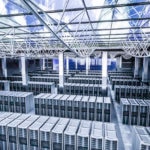Getting Out Of Infrastructure Mode
September 21, 2018
Network

Have you talked to your users lately? Here's a fun task for you this week or next: Take one of your most problematic users out to coffee. Just tell them you're going to grab a latte together and you just want some feedback. When you have a nice hot cup of java, ask them what their biggest pain point is in their job when it comes to IT. Now, you're not allowed to make declarative sentences. You can only ask questions. You can't defend the network or the virtualization stack. You can only listen and ask questions. Make sure you write down your responses.
It's Not The Network
Okay, while you're looking on your calendar for a good day for coffee, I'm going to tell you what your problematic user is going to say. Or, more accurately, what they aren't going to say. They won't talk about network latency or wireless coverage or even slow disk speeds. Do you know what they're going to complain the loudest about?
Applications.
Why? What is so special about those irritating programs? After all, we as IT pros don't even notice them. We're so busy keeping our systems running that we barely even notice when something is amiss in the land of pretty software buttons and screens.
But, for your users, the application is the gateway to your infrastructure. We spend so much time focused on switches and SANs that we forget that those are just pieces to a larger puzzle. We monitor and produce volumes of analytics about response times and availability and yet we barely even acknowledge when someone is telling us something is slow or misbehaving. Why? What should we be focused on?
Now you see why the coffee is so important. And why asking questions instead of getting defensive is key. You can't justify a bad user application experience with talk about how optimized your infrastructure is. Users don't care. They only see what their application sees. Slow performance can be anywhere. We use our tools and monitoring infrastructure to find it, but the users only see bad performance. We need to listen to their perception of things in order to understand why things are running the way they are.
I used to have an entire speech ready to go on a moment's notice when a user told me something was slow. It sounded a lot like a scene from Ace Ventura when the detective is overwhelming someone with questions and facts about the minutia of every detail in the operation of a computer. But, I was comically missing the point. Because the users didn't care about startup times or application loading screens. They just saw things not running the way they should and wanted to tell me about it.
Be Invisible
If you want to be the best IT professional that you can be, you need to disappear from the user's field of view. Your infrastructure needs to melt away until the application is the only thing they see. It's not all that uncommon when you think about it.
When's the last time you complained about a specific piece of the electrical grid? Or about the sewer system outside your house? Most of us understand how these systems work on a basic level but we don't have a clue how they operate behind the scenes. Sure, there are a ton of things that go on outside of our view. And we know little about any of them, even when they break. The utility companies do their best to monitor and maintain infrastructure. But they don't spend countless hours telling anyone that will listen how their distribution nodes couldn't possibly be the cause for brownouts.
Applications don't care about infrastructure. And by extensions, users shouldn't either. We need to spend more time with our heads down trying to make the network and other infrastructure systems functional instead of justifying why they can't be the problem. If we build the infrastructure to be bulletproof, I think we'll quickly find that the rest of the software will follow suit.
Share:
Tom Hollingsworth
Tom Hollingsworth, CCIE #29213, is a 15-year veteran of the networking industry. He spent over a decade as a senior network engineer for an education-focused…
Read more







